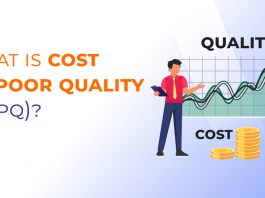How to Use the Fishbone Diagram for Root Cause Analysis
In the 1960s Kaoru Ishikawa discovered the fishbone diagram. He was a Japanese teacher and a quality management lecturer of his generation. He practiced this tool for the first season when he served with...
Understanding the Six Sigma Process Map
An essential feature of any Lean Six Sigma project is a process map – it helps explain the process at the heart of the project and directs you to unique target areas. There are...
What is Root Cause Analysis: A Comprehensive Guide
In today’s competitive business environment, it is imperative that enterprises ensure their products/services are of the highest quality. Also, customer satisfaction is a critical metric to retain and grow customer relationships. In this article, we will...
Effective Lean Six Sigma Waste Elimination Techniques
“Quality” is not just limited to some standardized values. It represents the extent to which a product or service matches the customer's requirements. Six Sigma’s deviations use a bell curve, which encourages the organization to...
Discover the Benefits of Implementing Lean Six Sigma
The Six Sigma methodology concentrates on reducing difficulties by analyzing the methods that generate them. The final aim is to decrease process errors to 3.4 per one million possibilities. But to find the actual...
Six Sigma vs CMMI: Understanding the Key Differences
During these challenging times, organizations must maintain high morale and a competitive spirit between co-workers. Six Sigma is an excellent program that follows a data-driven methodology, which gives the employees the necessary power to...
Understanding the Key Concepts of Control Charts
Also known as the Shewhart chart, control charts are used for statistical monitoring of operations in an organization. The details plotted are in order of time. A regulation map still includes the typical center...
10 Steps on How to Implement a Quality Management System Successfully
The implementation of a quality management system is both a science and an art. It uses information, but also requires the ability to get people involved. It takes an analytical approach, but innovation is also...
PRINCE2 vs Six Sigma: Understanding the Differences
As a project manager, you may have to face these challenges while working on a project. The responsibilities of carrying out a project lie solely on the shoulders of the project manager. Therefore, without...
Understanding Six Sigma vs ISO 9001: Key Differences
Quality Management is a crucial part of every industry. It is a skill that helps companies maintain the quality of their goods and services. Maintaining the quality of your services not only benefit your...


























